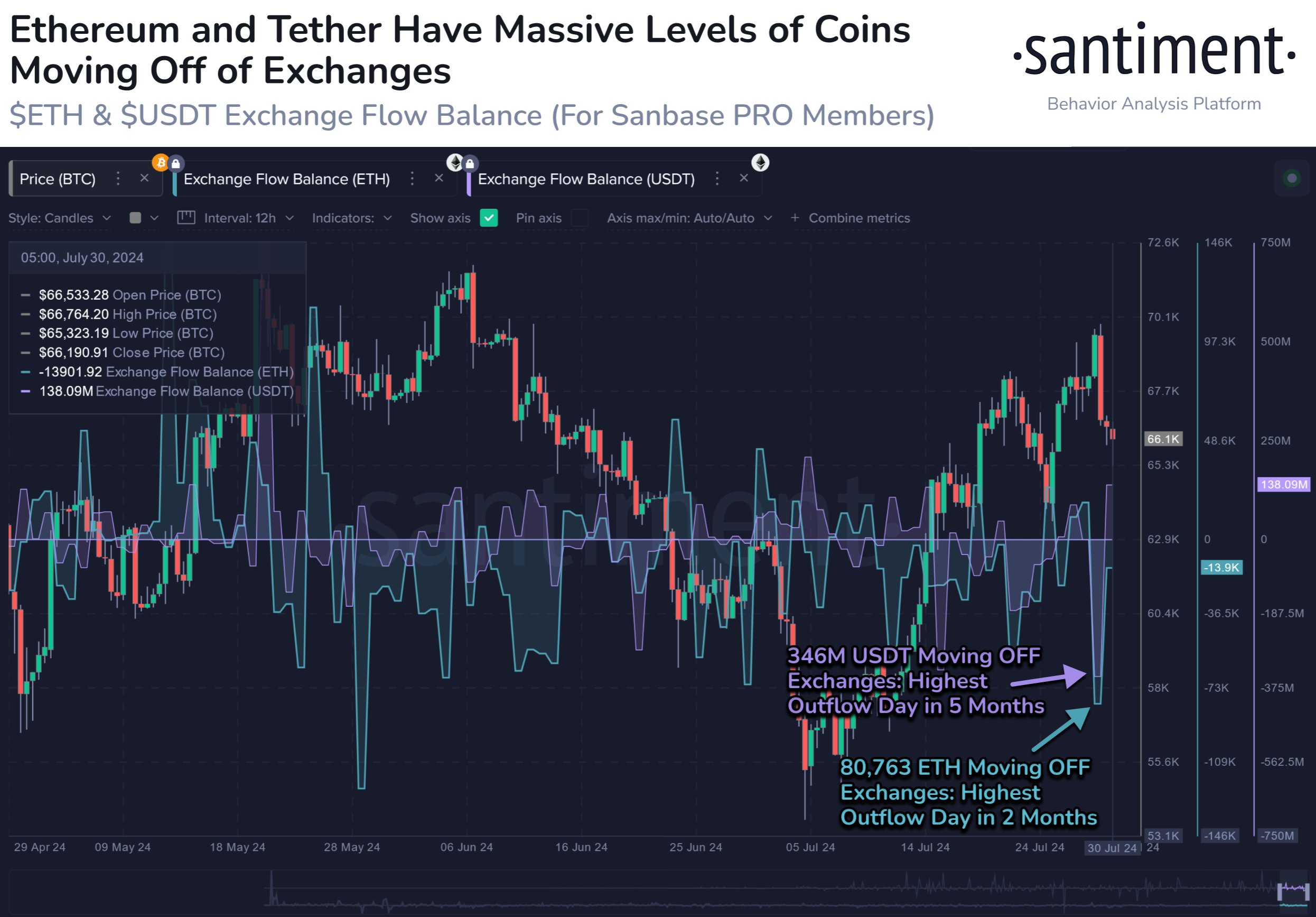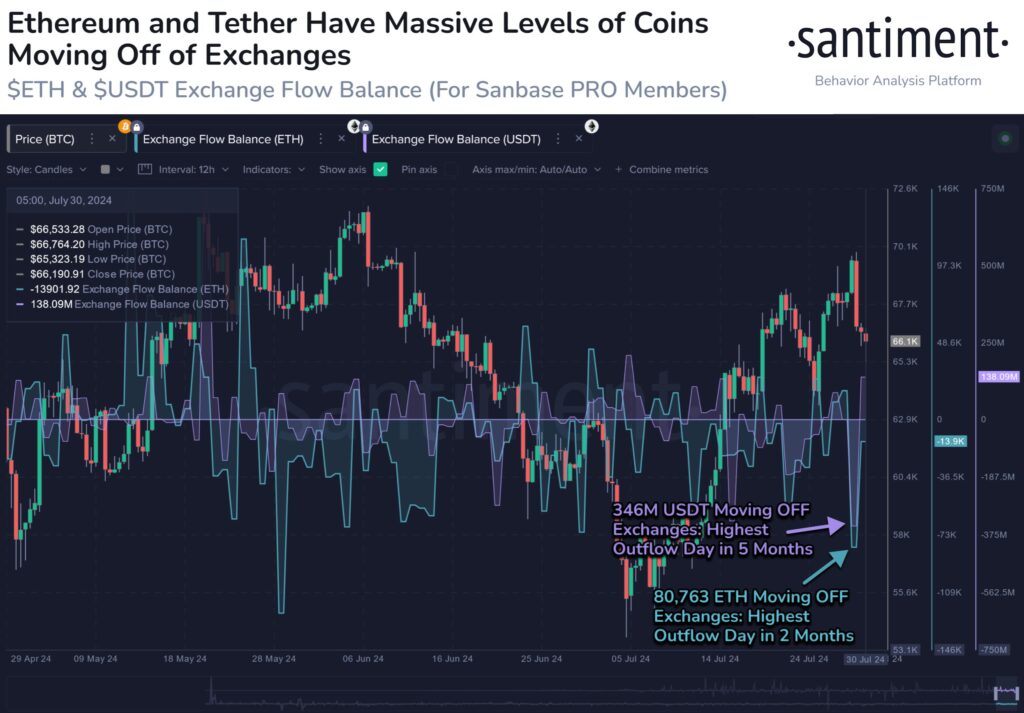On-chain data shows that Ethereum has recently seen high exchange outflows, but a development related to Tether (USDT) could be a bearish hurdle for the market.
Ethereum and Tether have both seen withdrawals from exchanges recently
As on-chain analytics firm Santiment explains in a new post on X, the market is ending July on a mixed note in terms of exchange flows. The metric we’re interested in here is “exchange flow balance,” which measures the net amount of a given asset flowing into or out of wallets associated with centralized exchanges.
When the value of this metric is positive, it means that inflows to these platforms currently exceed outflows. Such a trend implies that there is currently a demand for trading the asset among investors.
Related Readings
On the other hand, the negative indicator implies that holders are making net withdrawals from exchanges, potentially holding their coins for the long term.
The implications of these trends on the market as a whole depend on the exact type of cryptocurrency involved: stablecoin or volatile asset. In the context of the current topic, Santiment cited data from Ethereum and Tether, meaning that both types of cryptocurrencies are relevant here.
Below is the chart shared by the analytics firm that shows the trend of the exchange flow balance for both assets over the past few months:

As seen in the chart above, the exchange flow balance has recently seen a sharp negative spike for Ethereum and Tether, implying that investors have been withdrawing large amounts of these coins into self-custody.
For volatile assets, trading them can have a negative effect on their price, so an increase in the foreign exchange reserve can be a bearish sign. A negative foreign exchange flow balance, on the contrary, can be bullish, as it implies that the potential “supply to sell” of the currency is decreasing.
During the latest wave of outflows, investors withdrew 80,763 ETH (nearly $268 million) from these platforms, marking the largest spike in outflows in five months. As a result, Ethereum saw a significant drop in its supply to sell.
In the case of stablecoins, trade flows also mean that investors want to trade the asset, but since these tokens have their “stable” value around $1 by definition, such transactions have no effect on their price.
That doesn’t mean they have no impact on the market, though, as investors typically use stablecoins to buy a volatile asset like Ethereum, so large exchange flows from a stablecoin like Tether can be bullish for these other coins.
Related Readings
With this in mind, the exchange reserve of USDT and other stablecoins can be seen as a potential “buying bid” for volatile cryptocurrencies. Recently, USDT saw net withdrawals of $346 million, meaning that this buying bid has diminished.
“This reflects a lower buying power for future purchases by traders, which is usually a necessary ingredient for higher prices in the long term,” Santiment notes. It now remains to be seen how Ethereum’s price will evolve in the near future, given that both bullish and bearish developments have occurred simultaneously in the market.
ETH Price
At the time of writing, Ethereum is trading at around $3,300, down more than 3% from last week.
Featured image by Dall-E, Santiment.net, chart by TradingView.com




